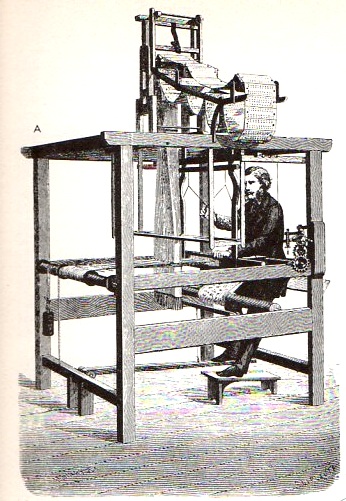JF Ptak Science Books Post 2375
Alfred Barlow wrote a splendid history of weaving1 in 1878, and in that book's later pages--and I suspect much overcome with the recent developments in the electrical field (not the least of which were the newly-invented light bulb and telephone)--Mr. Barlow waxes considerably on the application of electricity to the Jacquard process.
He writes,"It is scarcely to be wondered at that men acquainted with the application of electricity to telegraphy and other purposes should have believed it equally serviceable in some of the operations of weaving. As it might be expected, the Jacquard apparatus seemed to offer and excellent opportunity for the needles [reading the holes ion the loom punch cards] to be worked, not by the direct pressure of a card, but by the connecxion of a series of electro-magnets."
Amd then this bombshell: "By this means it was believed that paper may be substituted fir the cards, and the magnets might operate upon the needles through the perforations in the paper, or by passing a current of electricity through the medium of a metallic conducting surface on a sheet of paper or cloth representing the design to be woven, and thereby acting without the use or need of perforations." (Pages 424-5)
It was certainly a capital idea. Barlow may have been referencing the work of Alexander Bain and his punched-tape telegraph of 1841, though he does not mention him specifically. Barlow does mention several inventors from the 1850's who managed to make improvements with electricity in Jacquard-style machines, though none with the great effectiveness which he described here. The real, great advancement in computation waited for quite some time, even beyond the great innovations of Herman Hollerith (who began his tabulating successes in the 1880's, coming into international recognition with his work on the 1890 U.S. Census). But Barlow's imagination here is quite full, and just a little beyond his time.
Footnotes:
1. BARLOW, Alfred: The History and Principles of Weaving by Hand and by Power. London; Sampson & Low, 1878, xii, 443, iv pp, illustrated throughout with text illustrations.




Comments